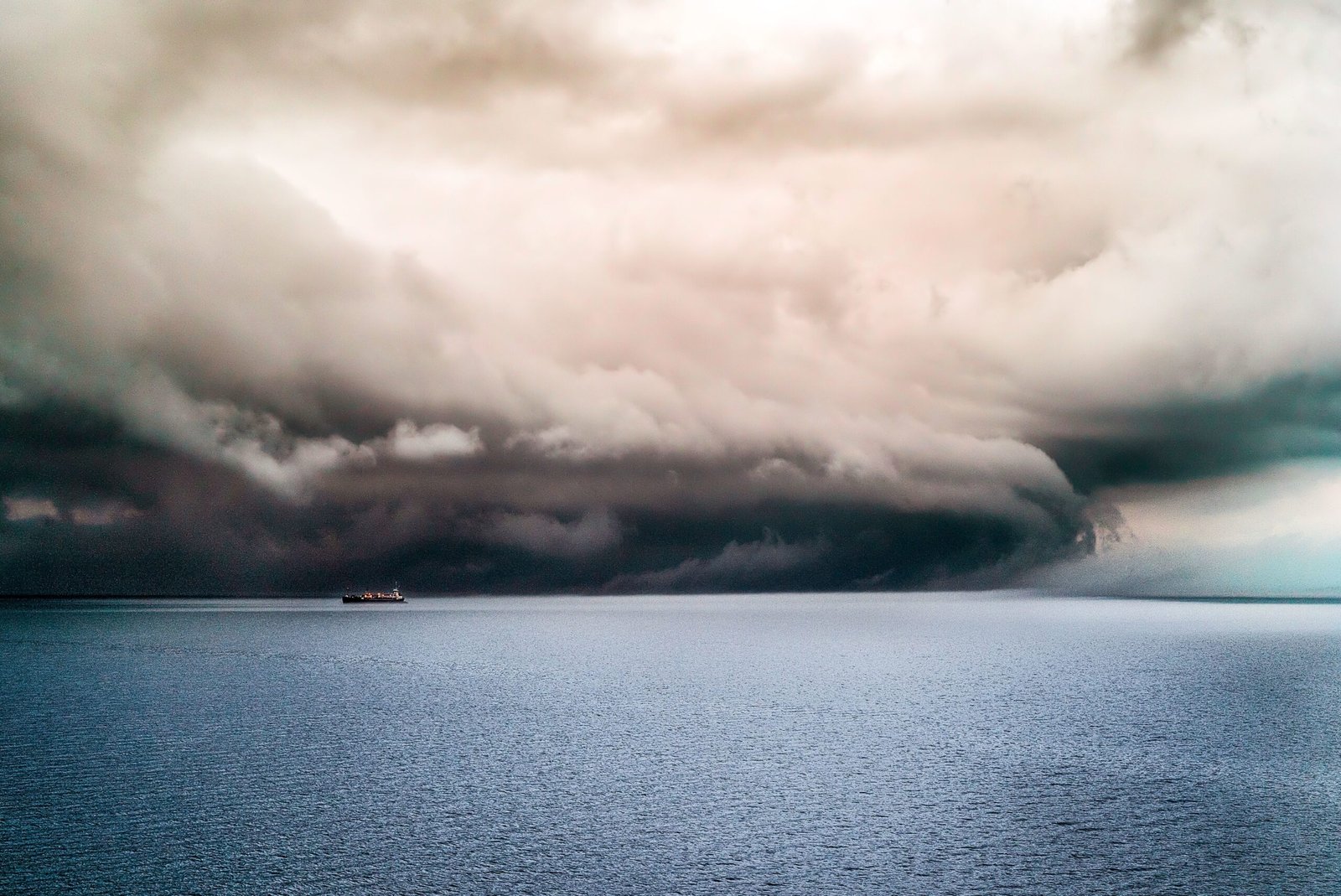There is something almost romantic about the word gale.
It sounds soft, like a character from a story or the whisper of wind through trees.
But when the radio or an app shouts Gale Warning, it is not poetry.
It is nature saying: stay home, hold on tight, and do not take the boat out.
These warnings have always been serious.
They have saved sailors, guided fleets back to harbor, and stopped weekend dreamers from paddling into danger.
A Gale Warning is not decoration — it is survival written in the language of the wind.
What is a Gale Warning?
So, what does a Gale Warning mean?
It signals winds between 34 and 47 knots — that is 39 to 54 miles per hour.
- It is not hurricane force.
- But it is far from gentle.
On land, that kind of wind tips bins and scatters umbrellas.
On the water, it is different.
Waves rise up, slam into hulls, and throw small boats around like toys.
Even large ships treat it with respect.
When you hear Gale Warning today or Gale Warning tomorrow from the National Weather Service, the only right choice is to listen.
Gale Wind and Gale Weather
The term gale wind feels old-fashioned, yet it carries weight.
A gale wind is strong and steady.
In gale weather, the lake or sea grows restless.
- The sky darkens.
- The waves march in lines.
- The sound of the air becomes more roar than whisper.
To people living near the Great Lakes or along the coast, a Gale Force Warning is not just weather talk.
It is part of life.
Old School Storm Warning Flags
Before mobile alerts and radar, there were storm warning flags.
- One red pennant with a black square meant a Small Craft Advisory.
- Two red pennants with black squares meant Gale Warning Flags.
- Two red squares with black centers meant Hurricane Warning Flags.
Even today, if you pass a Coast Guard station, you might see a Gale Warning flag snapping in the wind.
A buzzing app can be silenced, but a flag flying high is a command from the sky.
The Edmund Fitzgerald and the Wreck
You cannot talk about Gale Warnings without the SS Edmund Fitzgerald.
She was the pride of the Great Lakes.
On November 10, 1975, she sailed into a fierce Lake Superior storm.
- Winds screamed over 50 knots.
- Waves rose more than 25 feet.
- By night, the Edmund Fitzgerald sinking was complete.
- All 29 men of the Edmund Fitzgerald crew were lost.
The wreck of the Edmund Fitzgerald has since become legend.
Divers still study the Edmund Fitzgerald wreckage, and songs and books keep the memory alive.
The truth is simple:
When there is a Gale Warning Lake Superior, it is not background noise.
It is life and death.
Great Lakes and Gale Warnings
The Great Lakes have moods.
- Calm mornings can turn violent by night.
- Clear skies can switch to snow squalls in minutes.
- Calm surfaces can rise into walls of water without warning.
A Gale Advisory or Gale Warning Lake Superior can shut down ferries, keep fishing boats tied up, and remind everyone that inland seas act like oceans.
A gale wind on these lakes is as dangerous as open-ocean surf.
Chicago Weather Alerts and Tornado Warnings
Move south to Chicago, and storms take a new shape.
- A Tornado Alert Chicago or Tornado Warning Chicago sends sirens into the air.
- A Tornado Watch Chicago means the sky is ready.
- A Tornado Warning in Chicago means it is happening.
Winter storms add their own chaos.
A Winter Storm Warning Chicago can slow the city to a crawl.
Sometimes even a Gale Warning Chicago arrives when Lake Michigan surges with power.
Every alert matters.
A Chicago Tornado Warning is no less serious than a Gale Warning on the lakes.
Both say the same thing: act now or regret it later.
Hurricane Flags and Warnings
On the coasts, the symbols change — but the meaning is the same.
- One red square with a black center = storm signal.
- Two side-by-side red squares with black centers = Hurricane Flags.
The Hurricane Warning Flag and Storm Warning Flags carry the same spirit as a Gale Warning Flag.
Whether ocean or lake, the rule is the same: respect the signal.
Personal Story of Gale Wind
I once went kayaking on Lake Michigan.
The forecast said calm skies.
But half a mile out, the wind turned.
Waves grew, the kayak slapped side to side, and I felt small in the middle of the lake.
It was not an official Gale Warning.
It was not even close to hurricane force.
But for me, it was enough to learn the lesson.
When I reached shore, I promised myself I would always check Weather Gale Warning updates before stepping onto the water again.
The Meaning of Weather Alerts
- Advisory = Be careful.
- Watch = It may happen.
- Warning = It is happening now.
So when the forecast says Gale Advisory, it is early caution.
When it says Gale Warning, it is already here.
The same applies to Tornado Watch Chicago vs Tornado Warning Chicago Today.
These words are exact.
They can save lives.
Technology and Warnings
Back when the Edmund Fitzgerald crew faced their storm, they relied on barometers, radios, and instinct.
Now we have radar, satellites, apps, and alerts that tell us Gale Warning Tomorrow or even Gale Warning for Today before a cloud forms.
But tools only help if people listen.
Every year, people ignore Hurricane Flag Warnings.
Every season, someone in Illinois treats a Tornado Alert Illinois as noise.
And on the lakes, some ignore the Gale Advisory, believing they are stronger than the waves.
Nature usually proves otherwise.
Why Gale Warnings Matter
A Gale Warning is not just a number or a chart of Gale Warning Wind Speed.
It is respect — for water, for wind, and for life itself.
The Edmund Fitzgerald wreck, the Chicago Weather Alert, the red Gale Flag snapping in the wind — these are not just weather notes.
They are memories of storms survived and storms lost.
When we see a Gale Warning Today or Gale Warning Tomorrow, we carry both science and history.
Conclusion: Respect the Wind
So when you hear a Gale Warning, do not shrug.
When sirens announce a Tornado Warning Chicago Today, do not delay.
When you see Hurricane Flags flying, take them to heart.
Whether it is the wreck of the Edmund Fitzgerald, a Gale Warning Lake Superior, or a Tornado Warning in Chicago, the lesson is always the same:
Nature has the power — our only choice is to respect the signs.
FAQs
What does a Gale Warning mean?
It means strong winds between 39 and 54 miles per hour are happening or expected.
What is Gale Wind?
It is wind strong enough to earn a warning but not yet a hurricane — still powerful and dangerous.
What is a Gale Advisory?
It is a lighter form of warning, telling you that conditions are building but not yet extreme.
Why is the Edmund Fitzgerald linked to Gale Warnings?
Because the SS Edmund Fitzgerald sank during a fierce Lake Superior storm, making it the most famous shipwreck tied to gale conditions.
What should I do during a Gale Warning Today?
Stay off the water, secure outdoor items, follow every official Weather Gale Warning, and keep safe.



























